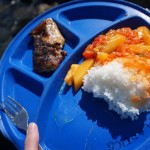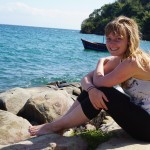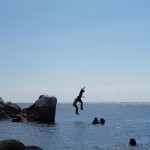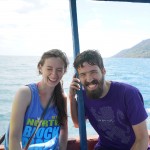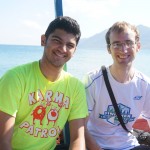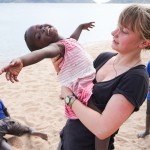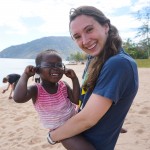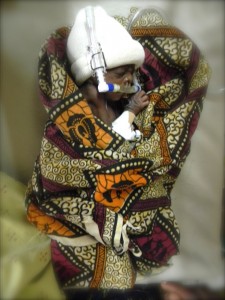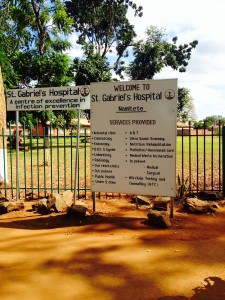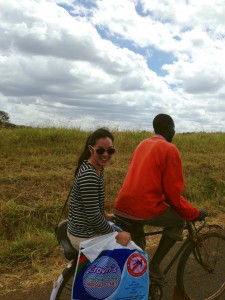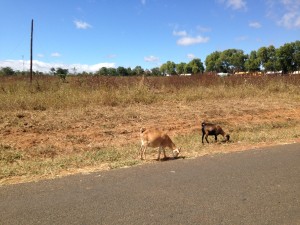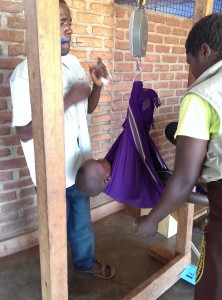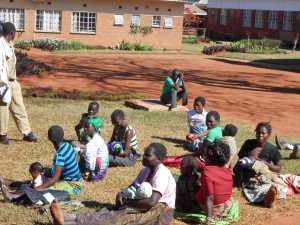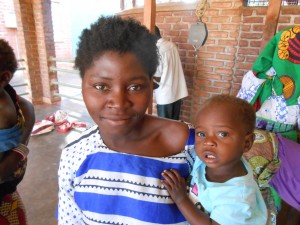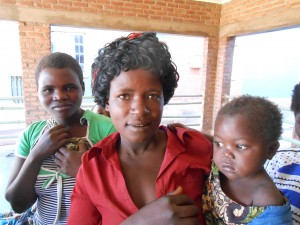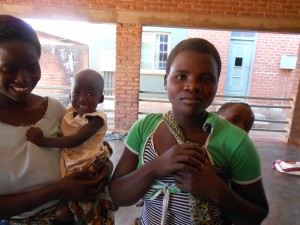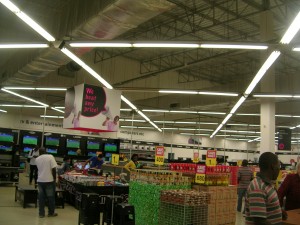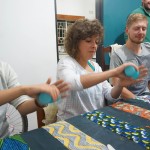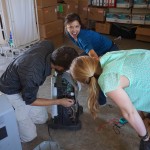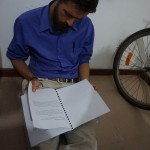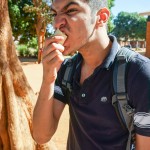You’re probably never going to find anyone who objects to donating much-needed medical equipment to developing world clinics. Equipment is expensive and difficult to come by in these areas to say the least. Furthermore, with some the budgets that many clinics have to operate within, there are times when some medical equipment would quite literally not be getting to these clinics if not for generous outside donations. But, after my few weeks here at PAM, it is evident that there are still some barriers to ensuring that medical equipment is donated in a way that way optimizes its benefit to the recipients. Outside aid is incredibly valuable obviously, but shipment after shipment of donated medical equipment is not necessary a sustainable way to address issues in resource management and procurement.
Working with the technicians at PAM has been both enjoyable and educational, and I feel like I’m gaining a better understanding of how QECH manages its donations. Here are some of my thoughts on a few of the current issues I’ve noticed with the medical device donation process.
1. Lack of regulatory oversight
The World Health Organization has established a thorough set of guidelines and recommendations on donating medical equipment. The document is thorough and well organized and most definitely worth a read (Check it out here: http://www.who.int/medical_devices/publications/en/Donation_Guidelines.pdf) But unfortunately, I’m willing to risk an eyebrow that these guidelines are not strictly followed about 99% of the time, as (for the most part) there are few means of enforcing or overseeing what goes into donation shipments.
After talking to a number of different nurses, doctors, and technicians at QECH, it is clear that this lack of regulation leads to many frustrations with the equipment that come into clinic. While I was in Chatinka a few days ago, I spoke with a nurse who was so excited about the 50 new syringe pumps that had just been donated to Queens. But, once she tried to actually start using the device, she was quick to discover that it would only run on 110V. Malawi runs on 220V. So unless the donors also want to provide a few voltage converters to supplement their shipment, the syringe pumps are essentially useless. And this happens way more times than you can possibly imagine. Sadly, not only does the operating voltage not match up oftentimes, SO many devices are also donated to QECH with plugs that don’t match the outlets in the hospital. Becky (another one of the interns here) was super sweet and gave her own personal outlet adapter to the paeds clinic the other day so that they could use a vital monitor that had been donated from the states. But certainly having interns provide these adapters during their clinical rotations is probably not the best, or most sustainable, way to address this problem in the future.
Oh and just today, a bunch of thermometers came in……in Fahrenheit! Ahhh!! Becky had to go around distributing new Celsius to Fahrenheit charts she had made because none of the nurse know how to work in Fahrenheit.
PAM has had to deal with medical equipment arriving at the hospital already broken, and sometimes devices are sent that are just so outdated and run down that the clinic is better off to having received them at all. If they’re broken and can’t be fixed, they quite literally just end up taking up precious hospital space, sitting there, doing nothing.
But thankfully, I believe that Malawi (and other nations) are starting to take a stand against receiving “useless” medical equipment donations, as seen by a newspaper clipping that sits on the bulletin board outside of PAMs office.
 Newspaper Clipping on PAMs bulletin board
Newspaper Clipping on PAMs bulletin board
Some countries have even started establishing regulatory bodies to make sure that donated equipment has gone through the necessary compatibility checks and inspections. For example, Ethiopia’s Drugs Administration and Control Authority (DACA) has created some pretty comprehensive checklists for their medical device donations. I’m really interested to see how these changes and new levels of enforcement will impact clinics long term.
But for the time being, I think that another way of complementing the work that can be accomplished through these regulatory bodies would quite simply be to increase communication between donors and their recipients. I think if donors just had a better idea of what would benefit clinics the most and what specifications need to be considered when sending equipment that is manufactured and produced abroad, a lot of these types of “careless” errors could be avoided.
2. No personnel or protocol in place to distribute and manage donations in country
I have spent a good amount of time at PAM for the past few weeks, and the building itself is incredibly crowded. There really isn’t even a whole lot of workspace for the technicians to work on the mountains of equipment that they are supposed to fix.
Although there are lots of medical device donations that don’t work or that aren’t compatible for the setting, there are of course those that are made up of awesome, functional equipment that could very well be put to great use within the hospital! And that’s what brings me to my second point. Hospitals need the personnel to manage these boxes, unpack them, assemble the equipment (safely), and just get them to the right departments. The picture of the boxes below has been sitting there for roughly 5 months now according to Jiwowa, and it is filled with all kinds of things that could be helping all the patients who so desperately need them.
 So many dusty boxes!! And this isn’t even all of them
So many dusty boxes!! And this isn’t even all of them
So point one and two ultimately kind of go hand in hand. Before equipment is even sent out, it’s important that it has gone though the proper inspections to ensure that it is appropriate and useful for the hospital in question. Therefore, part of ensuring that these devices are used to their maximum capacity means that you also have to think through how you’re going to actually put these devices into use once they get to where they’re going! I believe that donations “regulations” should involve making sure that the clinics have the personnel and resources to actually handle receiving the donations before they are shipped, so that working equipment doesn’t end up pointlessly taking up space for months on end.
During our next few weeks, Caleb, Carissa, and I plan on filling in that “personnel/resource” gap and will sort through and distribute some donations within the large boxes at PAM. But, we will also be trying to work with the hospital to try to figure out a new process/protocol that will continue and sustain this kind of work after we’re gone.
3. Lack of local capacity to fix equipment
While governments, international NGOs, and non-profits usually handle the actual donations on a large scale — an emerging problem is the lack of local capacity and resources to handle the maintenance and repair of devices as they break.
At Queens, the technicians are all incredibly well trained and obviously know what they are doing. But, many of the districts hospitals in Malawi lack the personnel to be able to troubleshoot/fix the broken equipment at their clinics, and will therefore just send this equipment to QECH to be fixed. So, the broken equipment build up is just horrendous and the ratio of personnel to broken equipment is so ridiculous that it’s really difficult for the repairs to happen within a reasonable time frame.
Malawi is taking steps to provide individuals with the proper tools (both literally and figuratively) to handle more equipment repairs by partnering with Japan’s International Cooperation Agency (JICA). With JICA’s technical support, they aim to train and develop PAM technicians all across Malawi. It’s great to see these kinds of changes taking place, especially after having spent the last week and a half teaching one of these types of workshops at the Poly! It’s been said so many times before that sometimes it almost sounds a little bit cliché, but seriously investing in human capacity is the way to go! The Poly is developing a new BME program and teaching its students valuable troubleshooting and medical device repair skills, and the Malawi Ministry of Health is setting up workshops to train more people already on the ground. Lots of exciting things are underway to address many of the issues related to maintaining the medical equipment in country, and I couldn’t be more excited to playing a little part within this much larger goal.
 Another small paper clip about Malawi’s Ministry of Health’s JICA/PAM partnership
Another small paper clip about Malawi’s Ministry of Health’s JICA/PAM partnership
4. Need for spare parts and repair manuals
The technicians at PAM are really good at identifying what is wrong with a piece of equipment very shortly after it is brought into the warehouse. However, 9 times out of 10, PAM just doesn’t have the budget or resources to get the spare parts that are in need of replacement to bring the technology back to life.
The picture below is of roughly 68 oxygen concentrators all in need of various spare parts to get working again. It is both really frustrating and sad.

Instead of having new equipment always being donated, I think that perhaps donations should start shifting towards providing technicians with the spare parts needed to fix the equipment that’s already in country. Getting devices back up and running would clear up a lot of space and also let technicians put their incredible repair skills to use!
Finally, when equipment is donated, the service manuals are usually 1) not included in the mix or 2) get lost along the way. When it comes to more complex pieces of equipment, a manual makes a world of difference, and could make or break a technician’s ability to figure out what’s wrong with a particular device. And then fix it!
All in all, my main take away is that it is not enough for donors to just be thinking about how medical device shipments have the potential to help a hospital in the short term. They should evaluate all aspects of sustaining the service that this equipment provides long term. From the consumables, to spare parts, maintenance, and repairs, etc. a LOT more is needed to sustain these devices once they are in country, and these things should all be considered and addressed well before the equipment ever reaches the hospitals they are trying to help.
I am motivated to learn more about the ins and outs of the donation process at QECH and in Malawi in general, and hopefully can find some creative ways to make a positive difference in this area. I think we have a few good ideas for now, and I will keep you guys updated on what we accomplish in the next few weeks!
After seeing the types of newspaper articles, training programs and classes that are popping up around Malawi, and hearing some of the discussions about these issues around Queens, I am hopeful that changes to the medical device donation landscape are pangono, pangono (little by little) underway.
Tionana zangas!

